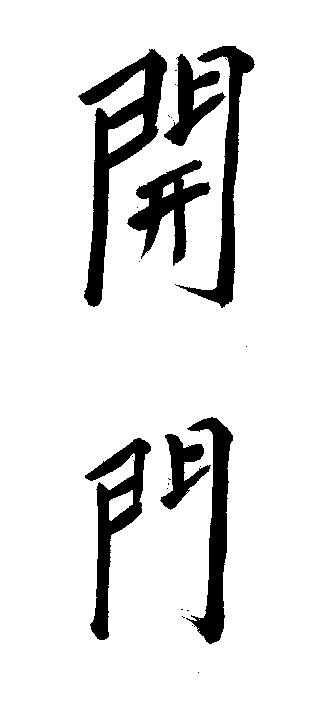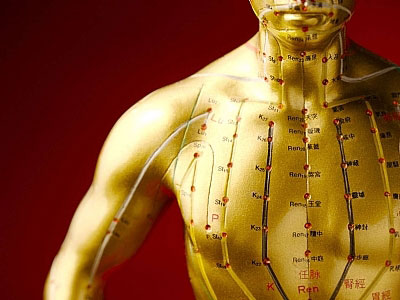
Energy cultivation
Kai Men 开门 means ‘open the door’, it is our Lee style of Qigong.
In one sense Kai Men means opening energy gates in the body which govern the flow of internal energy and let it flow around the system. In another sense opening the door means becoming more aware of what is going on internally and taking control of the processes you become aware of.
Qigong literally means energy work or cultivating the life force. We do Kai Men exercises at the beginning of our Tai Chi class as part of the warming-up process. The class has three sections, the first part is activating the internal energy, then in the middle of the class, we circulate that energy, and towards the end, we are gradually focusing the energy and concentrating it. The process is sometimes likened to the process of forging a sword. When the metal is first made from the base ore it is brittle and so the smith takes it and heats it, beats it on the anvil, then quenches it in water, then the process is repeated. Heating, beating, quenching. The effect is to compact the particles of metal in the sword and remove any impurities so making a very strong and flexible blade.
Kai Men is sometimes called Taoist Yoga because it has similarities with Indian Yoga which is also working with life energy. There are differences in that K ai Men exercises are performed in a continuous motion, we never hold the postures. Qigong involves practical exercises which can help us to regulate and build up a store of energy in the body a bit like the battery in your mobile phone. Sometimes the charge gets so low that the screen goes dim and you only have basic functions so it has to be taken offline for a while and plugged into the charger to get it back to its optimum efficiency.
Preventative medicine
According to ancient Chinese medicine, the lungs are considered one of the vital organs of the body and play an important role in the body’s energy system. In traditional Chinese medicine, the lungs are responsible for circulating the body’s Qi or life energy, as well as the body’s defensive energy known as Wei Qi. When the body is in a state of balance and harmony, Wei Qi is strong and can effectively ward off external pathogens. However, if the body’s energy becomes imbalanced, Wei Qi may become weak, leaving the body vulnerable to invasion by external pathogens and increasing the risk of illness.

Kai Men exercises have two sections, the first part involves breathing in time with movements of the limbs and torso. Each exercise is performed from a particular stance which is named after animal movements. The breathing is usually in through the nose and out through the mouth. Breathing is very important in cultivating life force because it is the most immediate way of getting energy into the body. Most people use at most forty percent of their lung capacity so we use deep breathing to expand the lungs and increase the strength of the breathing action. Deep breathing also gives the internal organs a gentle massage and workout and this is very important because they are primarily responsible for generating energy in the body, like the engine in a car. Qigong is known as an internal form of exercise as it works on the core of the body more whereas many other forms of Western exercise are classified as external exercise which develops the muscles. The second part of every Kai Men exercise is the extension when we stretch the movements a bit further and only emphasize natural breathing.
Qigong exercises have been practiced in China since ancient times, archaeological evidence from tombs dating back to 168 BC show people in various postures that can still be recognized in today’s exercises. The word Qi does not have any direct translation into English but is usually translated as life-force or internal energy. Another way of looking at it is vitality, sometimes you feel full of energy and purpose, other times you are run down and feeling low. Qigong exercises increase the flow of life force around the energy meridians which are connected to the internal organs. The organs supply the energy like a power station, the meridians are like the wires which connect the power station to your house.

Qi revitalizes the body and mind
Qigong is based on the same theory as Chinese medicine which is a holistic system, this means it works both on the physical level and also influences mental health and emotions. Increasing energy flow around the body is important on the physical level because it is this energy that supplies the day-to-day motive needs of the body, supplies heat to keep you warm, and enables the muscles to work so you can move around, it also supplies the mind with the energy you need for cognition thinking and perception. Energy is generated by the internal organs but also has to be transported around the system to supply every part of your body with the nutritive and regenerating energy necessary to keep the body young and healthy and working at its optimum efficiency. Every part of your body is constantly regenerating itself, you cut your finger and it heals over, you break a bone, it mends, it is the Qi or life force and the quality and flow of it that determines how quickly you will heal. At certain points along the network of meridians are doors or gates which can open and close to increase or shut down the flow of energy.
Qi can be stored in a reservoir
In Chinese Medicine, there is an analogy that likens the energy system in the body to the rivers and lakes in the landscape. Water falls on the mountain slopes and then finds its way into streams and at certain places, the water accumulates as a reservoir. A river enters the reservoir and a river leaves it and takes the water down to the sea. If too much water leaves the reservoir and not enough is coming in then eventually this reservoir will run dry, the amount of water entering and leaving the reservoir can be controlled with sluice gates. The farmer can open the gates at times of drought to let some of the stored water out to irrigate the crops, at times of flooding he can close the gates to build up the store of water for later use. In this way, the distribution of water to the crops can be kept even and the plants get the supply they need on a regular and timely basis. There are special energy meridians in the body known as extraordinary vessels which are not connected directly to the organs. Instead, they act as buffers and store energy which can then be used in times of need. These reserves of Qi in the body are especially important not just for rejuvenating the body but in times of illness when the energy system needs boosting to fight off diseases like if you become infected with a virus for example.

